In their opening fixture of the 2020 J1 League campaign, last season’s champions Yokohama F. Marinos fell to a surprising defeat against Gamba Osaka. There were glimpses of brilliance from the powerhouses of last year, however, it will be interesting to see if the side can re-find the form of last season when the league resumes play.
The side from Yokohama finished with 70 points last term, six points ahead of second-placed FC Tokyo, and bagged a whopping 68 goals in 34 matches – the most of any J1 League side in 2019.
This tactical analysis will highlight the key tactics which were deployed by Ange Postecoglu in their 2-1 defeat to Gamba Osaka in the first game of the season.
The scout report will also use analysis to show how Yokohama F. Marinos‘ tactics could be pivotal over the duration of the season, while also explaining an area which Marinos could improve in.
Marinos’ high press
While the Nisan-owned club shipped 38 goals in the J1 League last season – more than any other side that finished in the top six – it was the potency of their attacking play which aided them in lifting the trophy come the end of the season. A key feature of that and one which was on show against Gamba Osaka was their high and aggressive press when the opposition attempts to play out from the back.
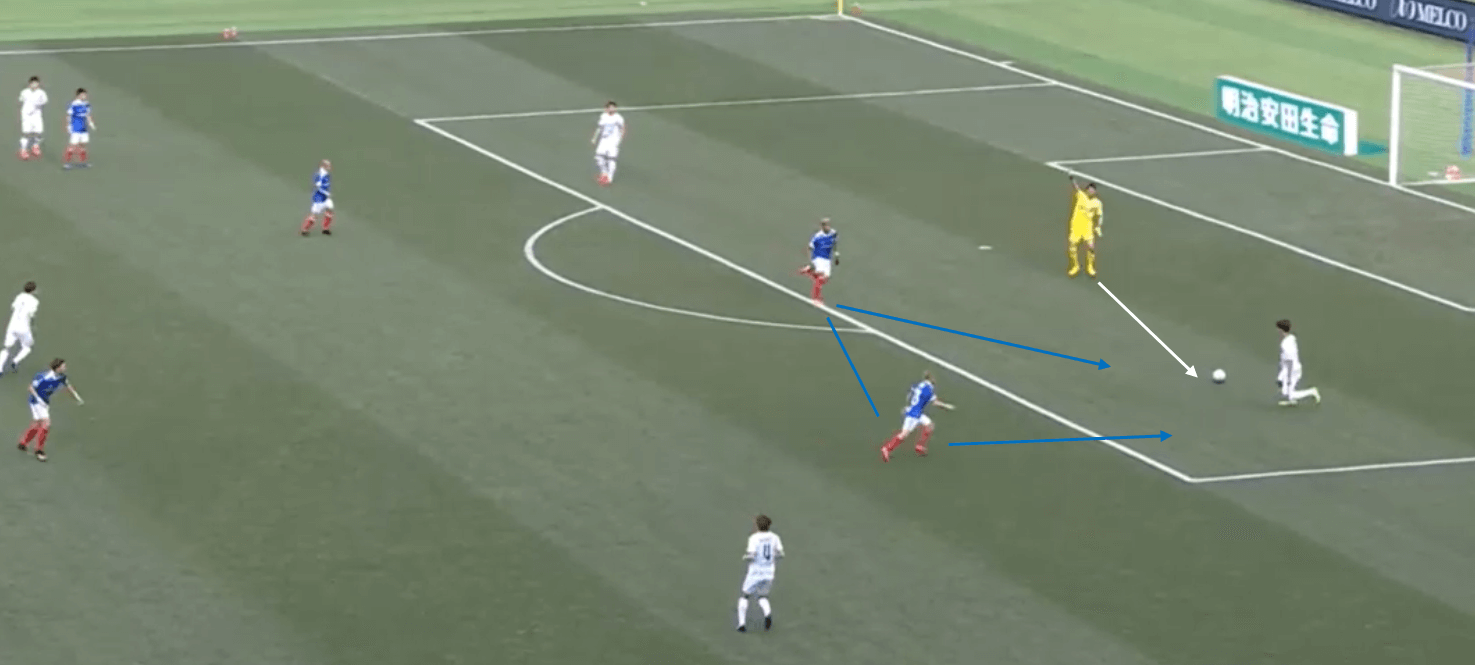
Here, inside the first three minutes of the game, the Yokohama side’s attackers show their intent. With Gamba Osaka having attempted to begin a move to play out from the back with the goalkeeper playing short, the two attacking players in range instantly and aggressively close down the ball. This follows a structure little more than the central striker closing passing lanes back across the pitch, and the nearest winger applying pressure to the man in possession.
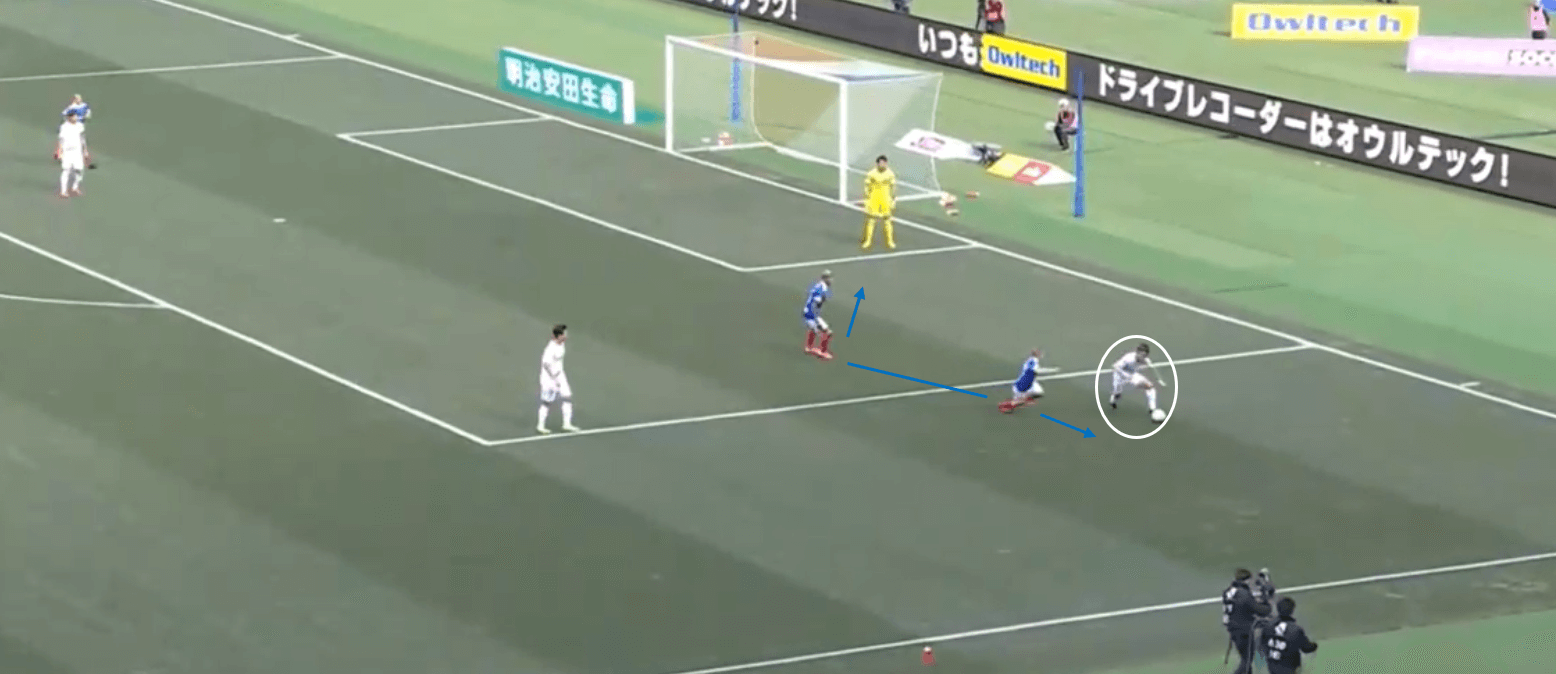
In this annotation, the same can be seen again. With Gamba Osaka attempting to play out from the back, the same attacking duo again attempts to win possession back high up the pitch. Centrally, Ado Onaiwu positions himself to cut passes across the pitch or press the ‘keeper and Teruhito Nakagawa aggressively closes down the player in possession.
This will be an effective tactic over the 2020 season when play is resumed due to the efficiency of the attacking players while pressing. Marinos’ press is predominantly manned by the striker and two wingers in their 4-2-3-1 system, so, if the press is beaten, there are enough defending players still behind the ball.
However, the level of speed and aggression to the press can often lead to possession being recovered or the defending player playing the ball long and giving Marinos’ players an opportunity to win an aerial duel.
The pivotal pivot role
As seen with many of the J1 League teams in their opening game of the season, a single pivot was crucial to the way in which the side functions – this was no different for Yokohama F. Marinos. Despite deploying two deeper central midfielders in the 4-2-3-1, Postecoglu tasked captain Takuya Kida with operating as a single pivot.
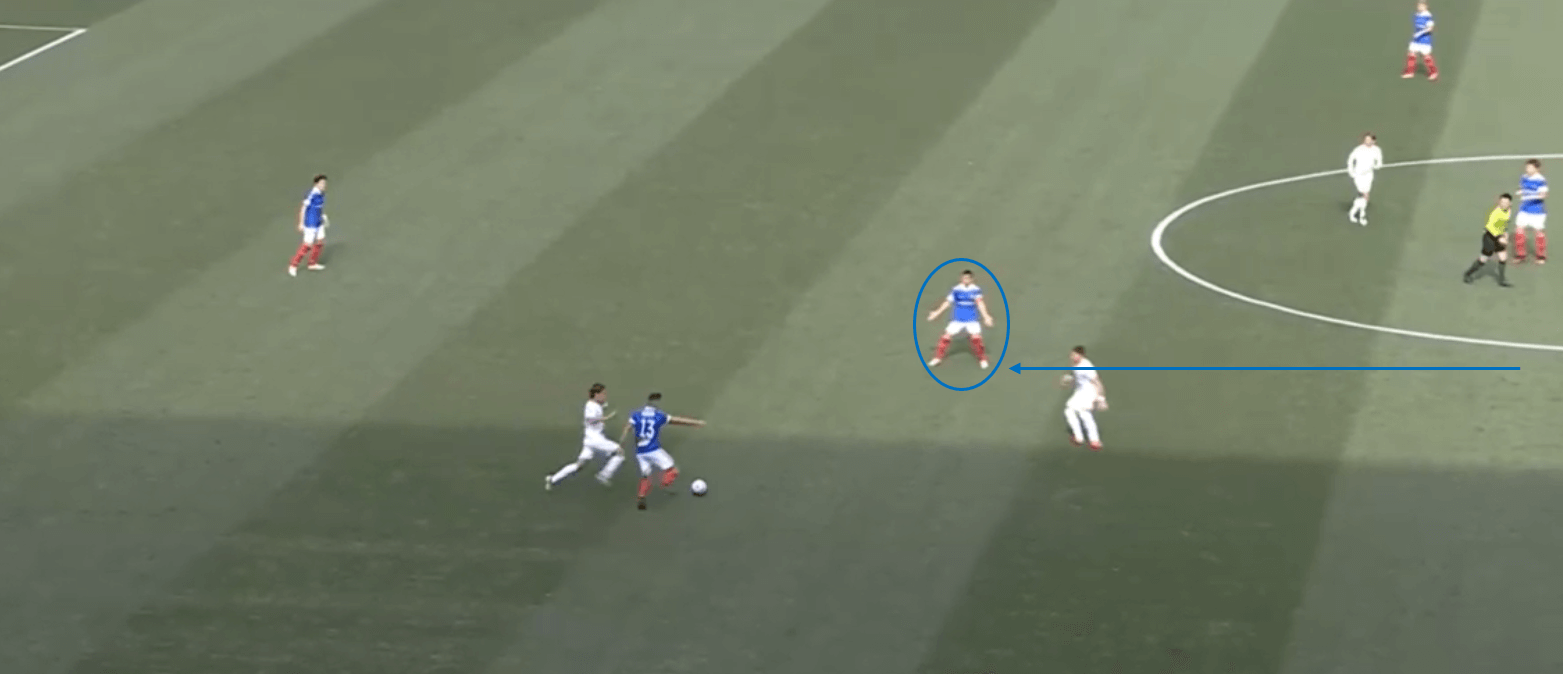
As can be seen in this annotation, Kida played one of the key roles for a pivot. One of the main tasks for a player who is deployed as a pivot is to help link the defence with the midfield and attack, and assist their side in playing through the thirds where possible.
In this instance, Kida has dropped deep to pick up possession from the two centre-backs to then play the ball on to the midfielders for Marinos and therefore assist in playing through the thirds.
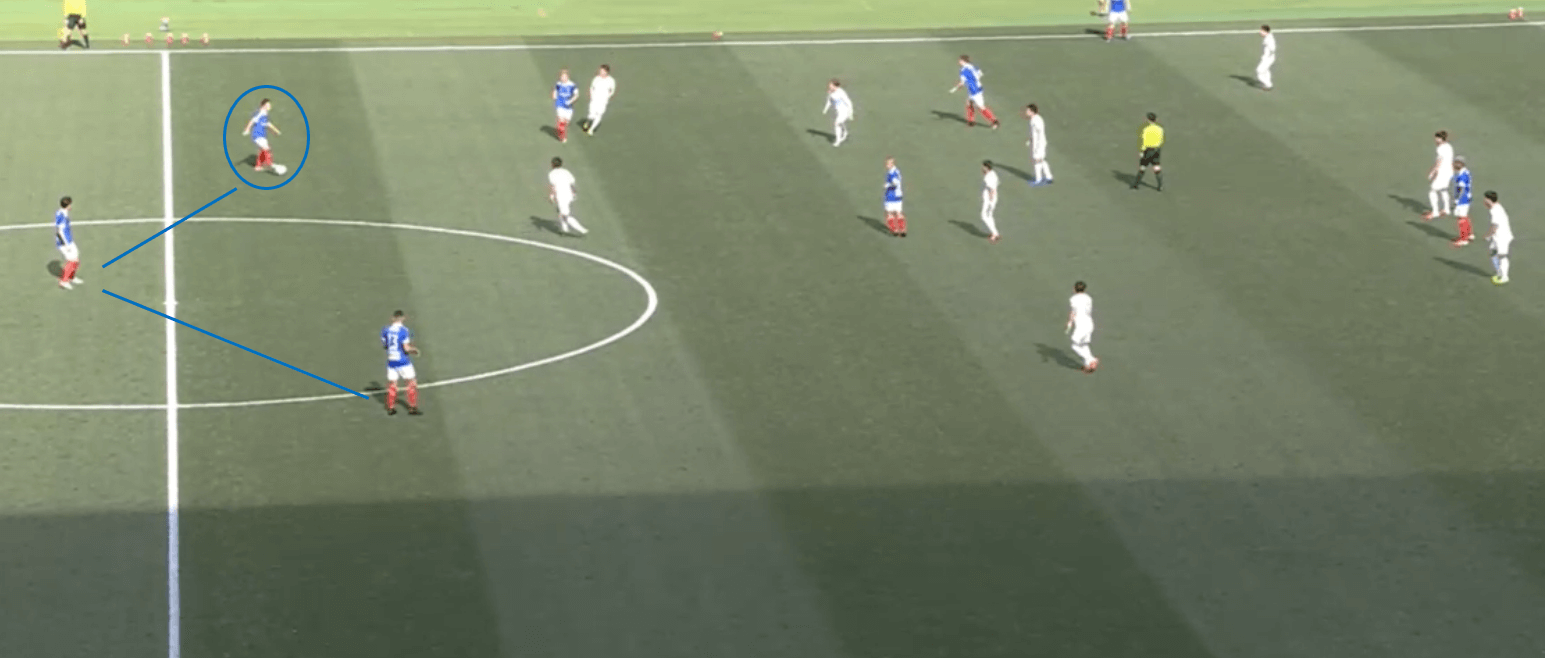
After going behind in the game early, Postecoglu’s tactic of playing with high and wide full-backs became a prominent feature – which will be discussed later in the piece – and to assist in this, Kida played another key role. To retain defensive stability, the midfielder seamlessly transitioned into a three-man backline when the full-backs would provide width further up the pitch. This three-man backline can be seen in the previous annotation.
Over the 2020 J1 League season, this appears as though it will not only be a prominent feature for Marinos but also other sides across the league. True to its name, the pivot role is pivotal in providing teams with tactical fluidity and the one role opens up a number of tactical avenues. So, it seems likely that Kida will be key for Postecoglu this season.
High and wide full-backs
As mentioned in the previous section, after going a goal down within the first six minutes, it became apparent that Yokohama F. Marinos were attempting to create overloads and provide themselves with extra width by having their two full-backs – Ken Matsubara and Theerathon Bunmathan – play high and wide.
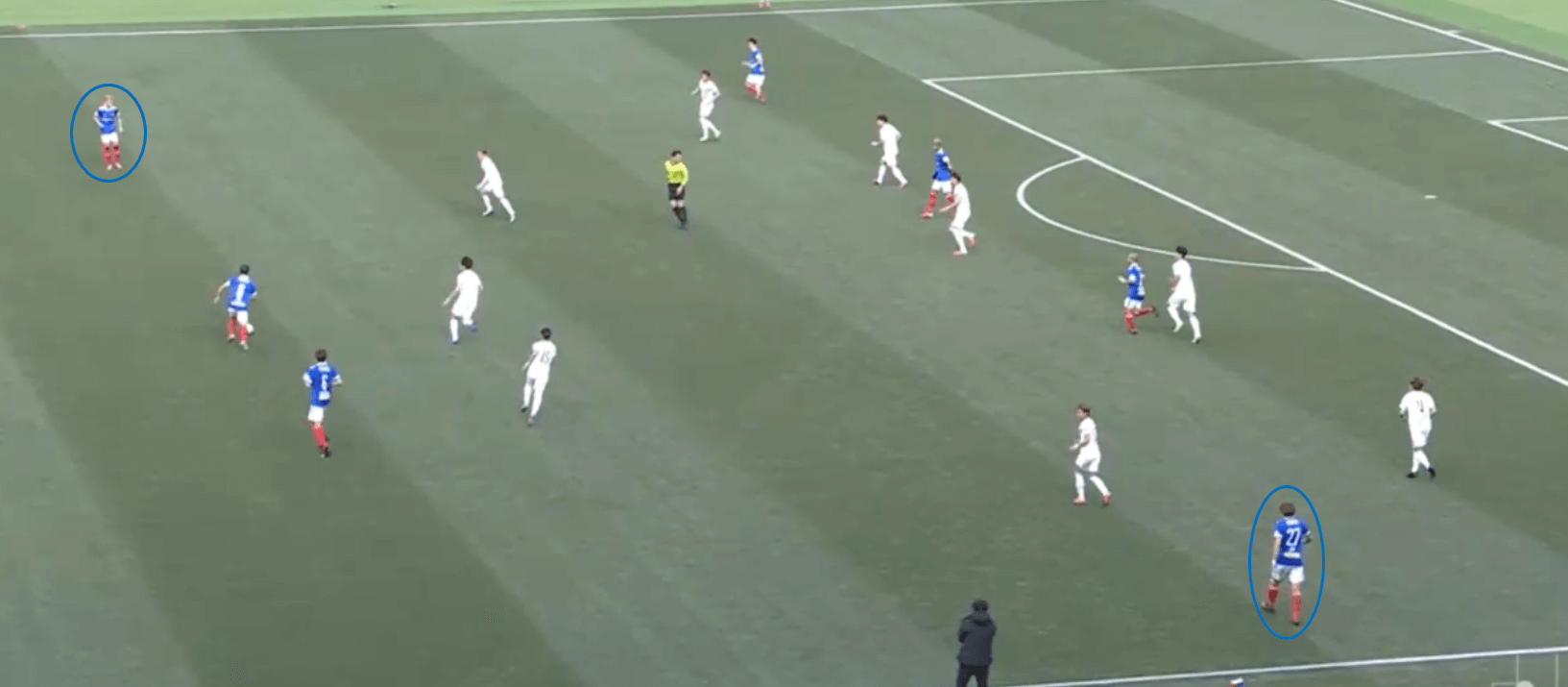
As can be seen here, with Yokohama F. Marinos looking to attack, the two full-backs have moved higher up the pitch and stayed wide to create a greater number of attacking options. As mentioned in the previous section, Kida’s role assisted in making this possible and with the additional player in either wide area this opened up the tactical avenue of stretching the Gamba Osaka defensive line.
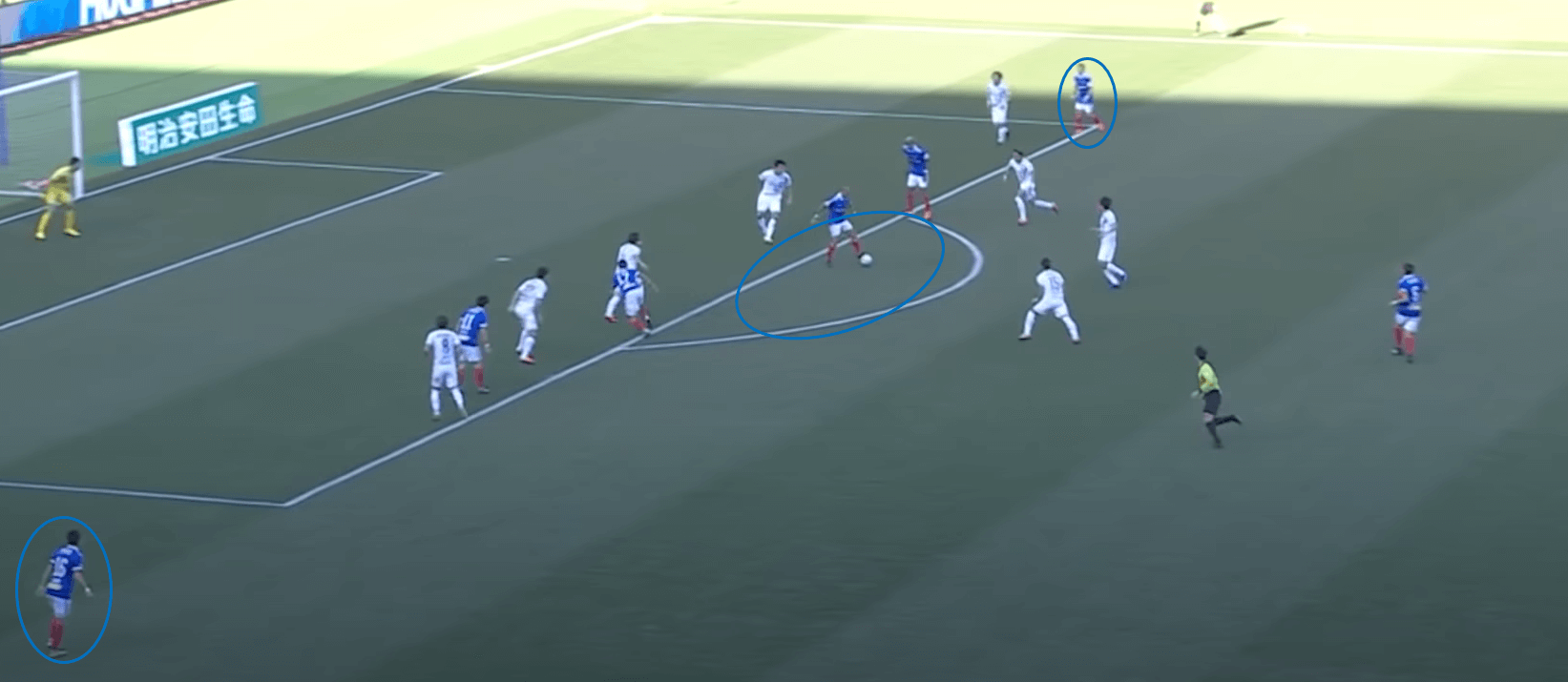
Here, with the home side having gone two goals down and late in the game, the high and wide full-backs tactic pays dividends. While the two defenders provide a greater number of attacking options and the potential for overloads, they also stretch the line of defenders. Less so on the near side, but on the far side, Gamba Osaka’s stretched marking has provided Marcos Junior with time and space on the ball.
From that area with time and space, the Brazilian midfielder is able to turn on the ball and fire a sumptuous finish into the net – which would only be a consolation goal ultimately. However, the high and wide full-back tactic seems as though it could be another key one for Yokohama F. Marinos this season, due to the attacking potential which it provides.
Sloppy at playing out from the back
A key weakness in the game against Gamba Osaka which ultimately proved to be part of the home side’s downfall in the opening game of the season was their sloppy play when passing out from the back. Perhaps having viewed themselves as the Goliath of the game, Marinos gave themselves too much time on the ball and coupled with the away side’s quick press, that caused Marinos problems.
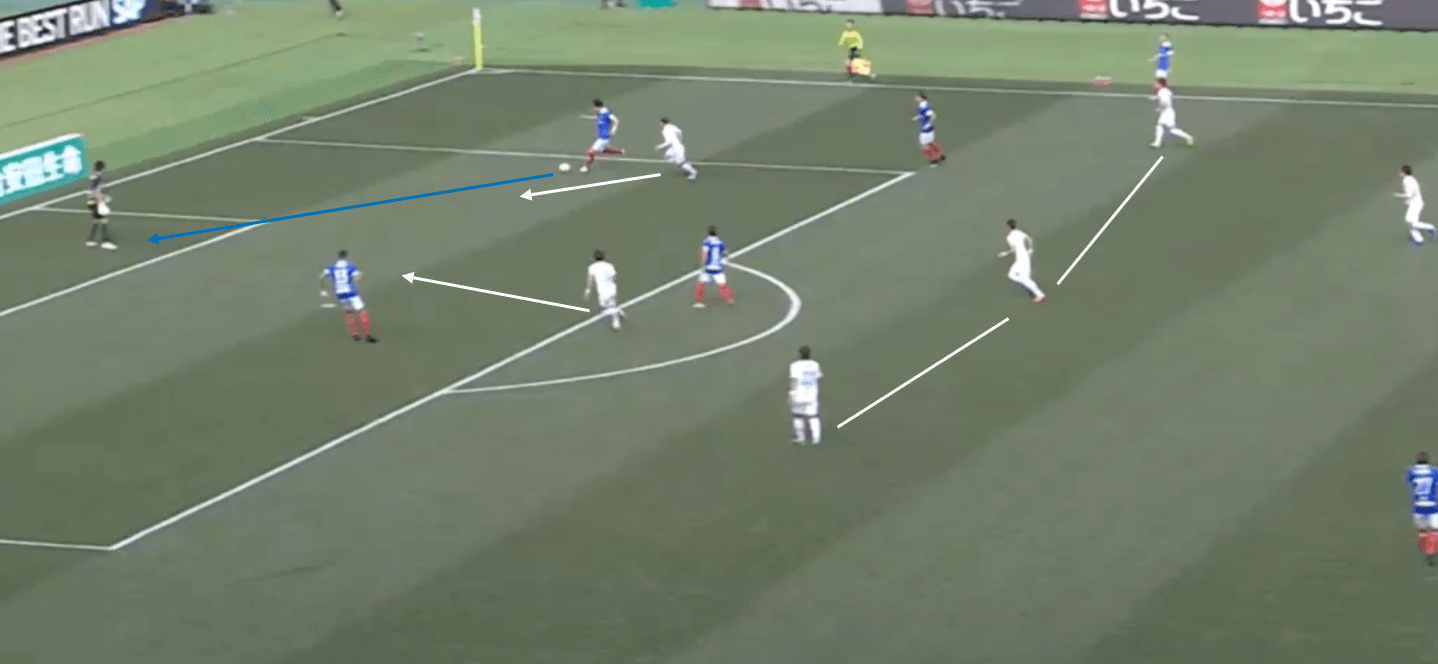
Here, this annotation is taken just seconds before Gamba Osaka open the scoring and the home side is in possession. Having attempted to play out from the back, the away side has forced Marinos back and they begin to close in. With a sloppy back pass to the ‘keeper, Park Il-Kyu should have immediately cleared the ball, however, he instead persisted with attempting to play out from the back and after a loose touch is pounced upon, Shu Kurata opened the scoring.
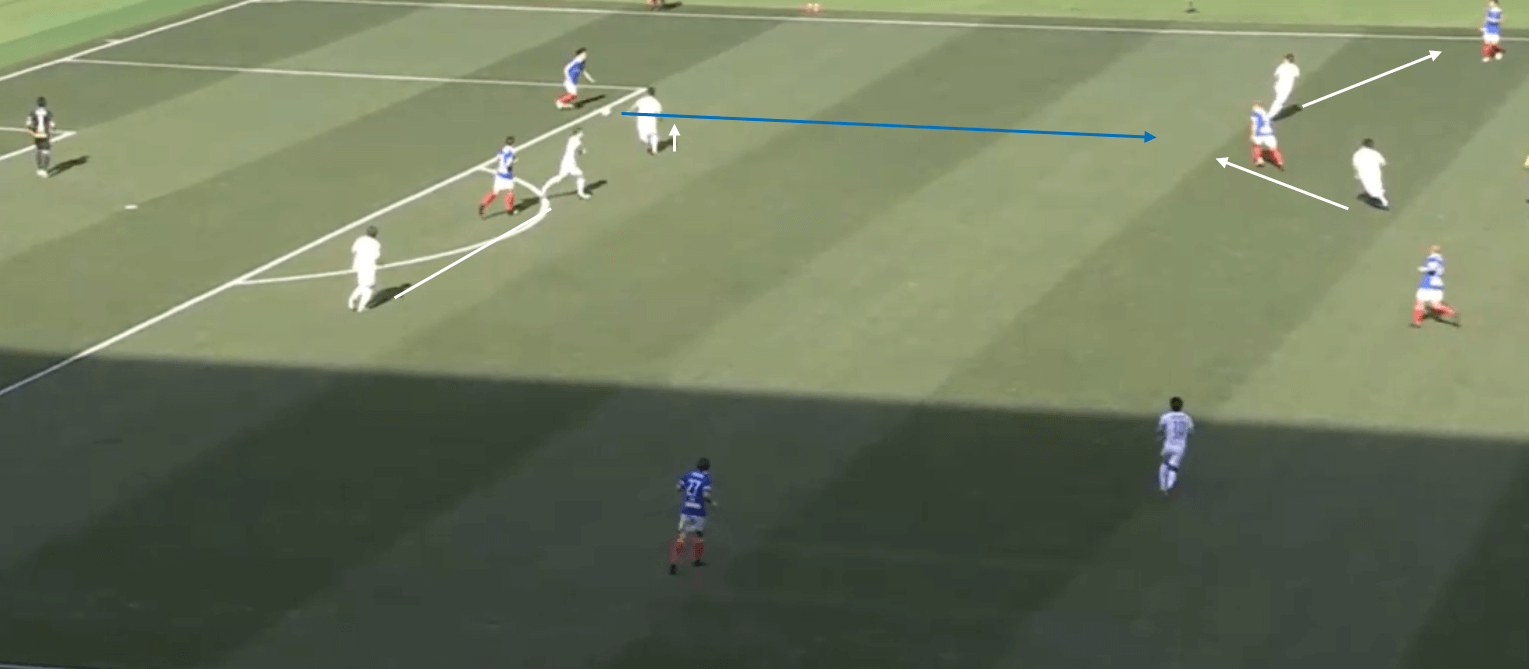
Around ten minutes later in the game, it was evident that Yokohama F. Marinos had not learnt their lesson and were almost punished again. Having persisted with playing out from the back when it had already proven susceptible to Gamba Osaka’s fast press, Postecoglu’s side finds themselves losing a grip on possession and again, instead of playing safe and going long, a sloppy short pass is intercepted by a pressing player.
Over 2020, this is an area that Marinos must work on if they are to have a successful season as they may share a similar fate against sides which press as quickly as Gamba Osaka. The Yokohama club seemed over-reliant on playing out from the back and when under pressure, there did not seem to be a ‘Plan B’, so that could be a real cause for concern for Postecoglu if things do not improve when the league resumes play.
Conclusion
Whether Yokohama F. Marinos will be able to retain their crown in the J1 League over the coming season, only time will tell. However, in their opening game of the season, the viewing did not bode well for the remainder of the year.
While the attacking aptitude of last season still remained visible – although the side did bag only one goal – the defensive frailties were also still on show, too. Hopefully, Postecoglu can think of a plan to increase solidity.
This tactical analysis has highlighted three key tactics of Ange Postecoglu’s Yokohama F. Marinos side that were on show in the opening game of the 2020 J1 League season.
The scout report has also used analysis to show how those tactics will be vital over the duration of the season and highlighted a possible weakness of the side.





Comments